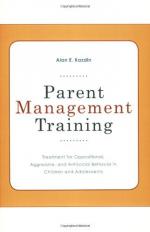|
This section contains 1,779 words (approx. 6 pages at 300 words per page) |

|
A pattern of behavior that is verbally or physically harmful to other people, animals, or property, including behavior that severely violates social expectations for a particular environment.
Antisocial behavior can be broken down into two components: the presence of antisocial (i.e., angry, aggressive, or disobedient) behavior and the absence of prosocial (i.e., communicative, affirming, or cooperative) behavior. Most children exhibit some antisocial behavior during their development, and different children demonstrate varying levels of prosocial and antisocial behavior. Some children may exhibit high levels of both antisocial and prosocial behaviors; for example, the popular but rebellious child. Some, however, may exhibit low levels of both types of behaviors; for example, the withdrawn, thoughtful child. High levels of antisocial behavior are considered a clinical disorder. Young children may exhibit hostility towards authority, and be diagnosed with oppositional-defiant disorder. Older children may lie, steal, or engage in...
|
This section contains 1,779 words (approx. 6 pages at 300 words per page) |

|


